Introduction

At the outset these might not seem like rivals. After all, one is selling you the ‘GS’ dream while the other is marketing ‘Diavel’ like chutzpa. But there is a common thread that binds them, a thread that has got us out of bed before sunrise with the promise of a sunset at the other end. We are talking Touring. But, we will get to that in bit because there are other similarities between the two that need highlighting.
Both the Bajaj Dominar 400 and the Royal Enfield Himalayan are single cylinder, near-400cc motorcycles. These use simple cycle parts – regular non-adjustable telescopic forks up front and a pre-load adjustable monoshock at the rear, and single disc brake setups front and rear. Only the Dominar gets ABS. These also deliver nearly the same torque and weigh exactly the same. What’s more, the Dominar and the Himalayan are priced pretty close too.
Now to their six degrees of separation…
The product brief

The Himalayan came first. It was part of Royal Enfield’s elaborate spin on how every RE rider must ride to Ladakh as if it were some sort of coming-of-age ritual. And to make that haloed journey easier, RE broke tradition; it went modern. The retro-modern thought process gave way to adventure-like thinking. As a result, the Himalayan got a new engine, a new chassis and the best cycle parts RE had ever put on its motorcycles. It was to be an affordable GS for the masses.
Unfortunately, the affordable bit overpowered all else. The new engine lacked the grunt and refinement of modern day 400cc units; the brakes – even though good on paper – were wooden to the feel and bite; and the build quality was appalling with bits and pieces falling off the bike. RE tried to rectify this by issuing a recall and assuring improved performance. Our test bike, we are told, is from the improved lot. So, the expectations are high.

Now, while RE was battling the recall, Bajaj strutted in with the Dominar. And strangely Bajaj wants you to hop on and ride to Ladakh on this one too! It can do it, of course, as can any other motorcycle in today’s day and age, but the brief for the Dominar was that of a power cruiser aka Diavel. It had to be a bike that looked brawny and modern, had tons of torque, could go around bends and then take you on a road trip wherever the dart landed on the map.
So yes, the Dominar looks the part, and it borrows from KTM’s 390 platform, which truly is the benchmark in its class both in terms of performance and dynamics. On the Dominar though, it’s all gone quite blunt. For starters, it has gained weight and lost power. It’s also down on refinement, dynamics and braking. It’s like it has gone from being the young Aamir Khan in Dangal to his portly self.

Clearly, product brief is one thing, but to get it right, a different thing altogether. And even though both our protagonists have failed to hit the nail on the head, these remain our only near-400cc, single cylinder, touring options. Time then to fire up the engines and chase the sunset.
The touring story

I start with the newer kid on the block. And just pushing the Dominar 400 out of my parking takes some effort. Thankfully, once on the move, the weight distribution and the seating triangle mask its 182kg bulk quite well. It’s still dark and those all-LED headlamps – exclusive to the Dominar in this test – are a real boon. The spread and the reach of the illumination is one of the best on any bike that’s on the saner side of Rs 2 lakh. The seating ergonomics are great too. You just get on and you are instantly comfortable.

And it has likable dynamics; at least in this company. We are on NH3 heading towards Igatpuri. The road is wide, well surfaced and a little winding at places. The Dominar is completely at home here. It’s not rapid but it gathers momentum without a fuss, tips into the fast flowing corners without hesitation, and those road-going MRFs allow for some aggressive throttle inputs at corner exits. It’s planted in a straight line too.
The only issue when going fast on the Dominar is the vibes. And the loud engine noise, which is anything but pleasant. The Bajaj begins vibrating from as early as 4,000rpm and the higher you climb up the rev range, the worse it gets. The vibes can be felt through the handlebar and levers, via the footpegs, and even through the seat. It’s also a little shorter geared than we would have liked given Bajaj had six ratios to play with.

Soon, it’s time to turn off NH3 and head towards Jawahar. And this presents a bigger problem. The ride quality. On NH3, the Dominar’s ride wasn’t great but it wasn’t bothersome either. But here, on this single-lane, pothole-ridden road, it’s terrible. With its rear constantly kicking up and the front crashing into any depression it finds, within minutes of being on the Mokhada-Khodala road I feel I am going to dislodge my kidneys. I can’t take it anymore, especially given how uncomfortable it is to ride the Dominar standing up.

Things are a lot more comfortable now. Not only does it feel natural standing up and riding on the Himalayan, it is allowing me to fly over what is an awful excuse for a road. Even sitting down, the RE pampers your back and arms more courtesy the softer and longer travel suspension. I like the seating position on the RE better as well; it’s like sitting on a chair with your arms comfortably suspended while the legs take the relaxing L-position.

And on these narrow, bumpy and winding roads, the Himalayan feels more confident as well. Even around bends. Sure, the RE is no match for the quick turning, more feedback-rich and grippier tyre clad Dominar on a well surfaced twisty road, but here on this pitted road, it is running away from the Bajaj as the latter struggles to holds its line and skips around.

But, not all is well with the Himalayan. Thanks to the recall, the engine is certainly more refined but it still sounds agricultural. Gearshifts too are less clunky but they remain hard. And interestingly, there’s no change to the brakes, so it’s all still pretty wooden, weak and scary, particularly the rear.

It’s evening and with the sun coming down, we are on our final leg heading back to Mumbai on NH8. And it’s advantage Dominar all over again. While the RE is most comfortable cruising at 100kmph given the subdued vibrations at this pace, and not to mention, its limited braking and acceleration ability, the Dominar can do it at 120kmph as well. Only difference is while the RE at 100 is relatively vibe-free, the Dominar refuses to stop shaking itself frantically at anything over 90kmph.
The decider

The sun has set, we are back in Mumbai, and we have confirmed one thing: Neither bike here is an outstanding touring machine. These are both compromises. The ingredients are there, yes, but the execution lets them down. Between the two though, it’s a split between speed and comfort; style and purpose; and quality and usability.
The Dominar is more about dynamics and good roads; it’s about better quality and a more appealing design. The Himalayan on the other hand is less for national highways and more for our poorly kept state highways; it’s less about flash and more about purpose given it is designed to hold luggage and it comes with a centre stand. There’s also less to break on the RE in case you drop it. Not to forget, it offers a more comfortable perch for the pillion.
Photography by Kapil Angane
Update: We would like to clarify that the Himalayan was not 'recalled' as mentioned in the article as clarified by this quote by Siddhartha Lal, CEO, Royal Enfield.
"The Himalayan is Royal Enfield's ground-up motorcycle, purpose-built for adventure and touring. Since its launch in February 2016, the Himalayan has been very well received by our customers. As a company that wants to ensure that its customers are well looked after, we are currently organizing a proactive free service update for our Himalayan customers to address certain non-critical technical issues. This will enhance their riding experience to the Himalayas this season."
Gallery
1/73
Bajaj Dominar 400 ABS vs Royal Enfield Himalayan
Double Tap to Zoom











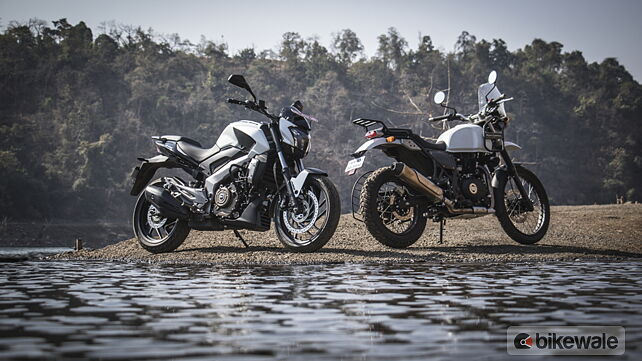












![Bajaj Dominar 400 [2018] Image Bajaj Dominar 400 [2018] Image](https://imgd.aeplcdn.com/272x153/bw/models/bajaj-dominar400.jpg?20190103151915&q=80)
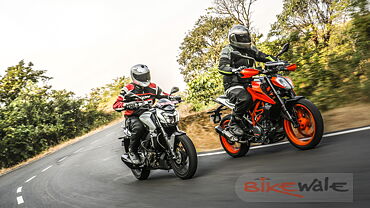



















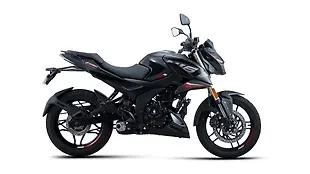
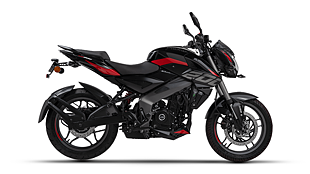
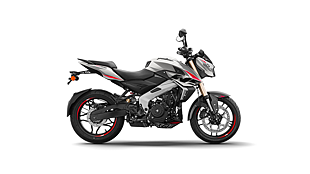





![KTM 390 Adventure X [2025] KTM 390 Adventure X [2025]](https://imgd.aeplcdn.com/272x153/n/cw/ec/190885/390-adventure-x-2025-right-side-view.jpeg?isig=0&q=80)